From how to get there to what to see, here's everything you need to know about Hammerfest, Norway.
There is no bigger town farther north in Norway than Hammerfest. About 8,000 people live in this northern outpost, a number that regularly swells with tourists travelling on the Hurtigruten coastal ferry or on their way to the North Cape.
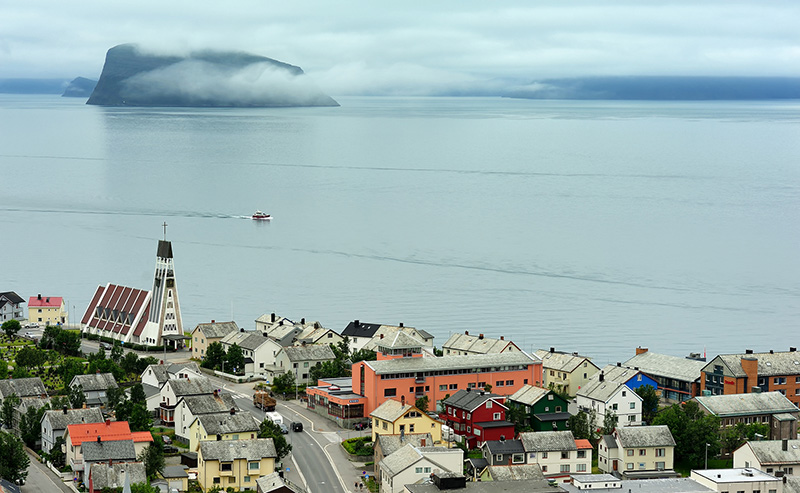
Before I travelled to Hammerfest, all I knew of the place was the rather grim description by travel writer Bill Bryson. In his book Neither Here Nor There, Bryson writes:
“It is a place of dark and brutal winters where the sun sinks into the Arctic Ocean in November and does not rise again for ten weeks. I wanted to see the northern lights. Also, I had long harbored a half-formed urge to experience what life was like in such a remote and forbidding place.”
Ever since then, I had the same urge to visit. When it came time to research and the Moon Norway guidebook, I flew north. A few years later, I returned as part of a Hurtigruten voyage. Here's my thoughts on Hammerfest.
Table of Contents
Hammerfest: Life in Norway's high north
On arrival at Hammerfest you can’t miss the claims to the world’s northernmost city, but is that really true? It comes down to the definition of a town/city in Norway.
Originally only places with a population of above 5,000 could be defined as a town/city, but since that restriction was removed, the fishing village of Honningsvåg—a little farther north—has contested the claim.
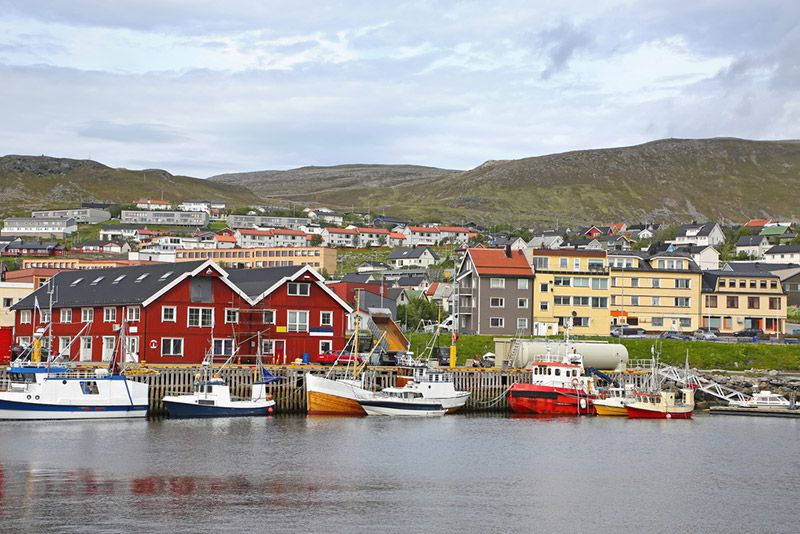
Hammerfest's mascot is the polar bear, taking pride of place on the coat of arms. At first it seems strange given that the predators live across an ocean on the Svalbard archipelago.
However, Hammerfest’s prosperity in times gone by was based on hunting marine mammals in the Arctic Ocean, and expeditions to Svalbard were commonplace to hunt for seal, walrus, and polar bear, back in the days when the polar ice came much farther south.
One animal that does roam the streets of Hammerfest is the reindeer. During the summer, reindeer herds can be quite the hazard to drivers on approach to Hammerfest as they wander into the roads with little regard for the danger. Despite measures taken by the local council, the animals do on occasion breach the city limits, so take care when driving!
Despite its fishing and hunting tradition, the town's economy today is driven by the industrial facility on Melkøya island, just outside the town. Here, natural gas from the Snøhvit gas field in the Barents Sea is processed before being exported across Europe.
Downtown Hammerfest
Most people arrive by ship and have very limited time to explore the town's compact downtown area. Founded in 1963 by a couple of enterprising locals, there is nothing royal nor ancient about the Royal and Ancient Polar Bear Society.
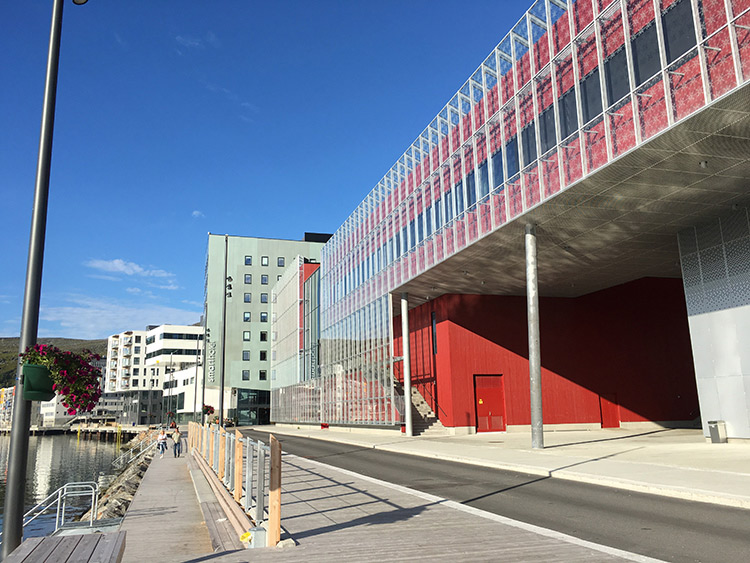
While membership doesn’t bring you any real benefits, it does prove you visited this northern outpost, as membership can only be obtained in person, so there is a certain novelty value.
Despite the obvious tourist trap, it's still worth a visit because the society's small museum about Hammerfest culture is free and co-located with the tourist information office.
The centrepiece of the modern boardwalk, the Arctic Cultural Center is the cultural meeting place for Hammerfest and the surrounding region. The vivid red wooden panels and glass skin of the modern building have created a new architectural icon for the city.
The history of Hammerfest
The history of Hammerfest, one of northern Norway’s oldest towns, is littered with tragedy. The town received its first doctor in 1792, but within a couple of decades the population had been ravaged by plague and the Napoleonic wars.
In 1890, two-thirds of the town was destroyed by fire. As part of the rebuilding efforts the town became the first in Norway to get electric street-lighting.
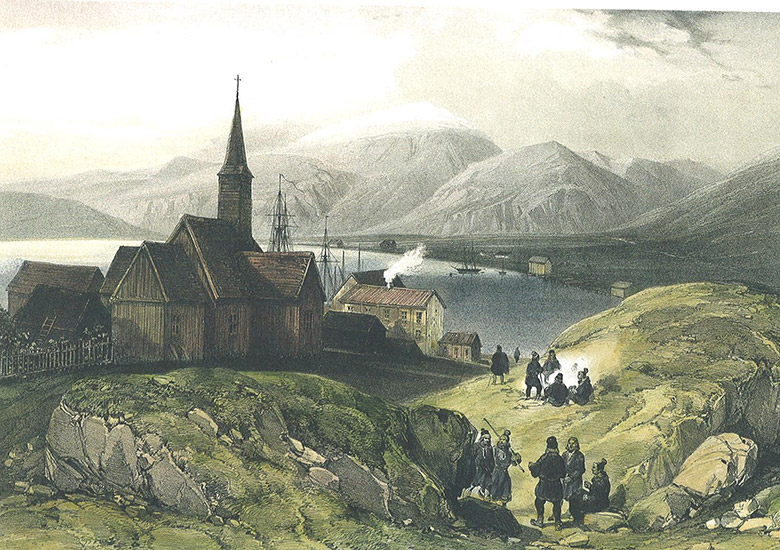
Around this time, Hammerfest became popular among wealthy European tourists keen to experience the midnight sun. Kaiser Wilhelm of Germany was a notable regular visitor.
Because of its ice-free harbor, Hammerfest was an important naval base throughout the German occupation of Norway in World War II. Parts of the town suffered bomb damage, but the most damage was done by German forces themselves at the end of the war.
The retreating army systematically burned almost every building in Hammerfest—and across the wider county—and forcibly evacuated all residents. All that was left of Hammerfest after World War II was the small Hauen burial chapel. The 1937 structure remains standing just across the road from the new church.
In 2007, the town's economy was transformed when natural gas processing came to Melkøya. The biggest industrial development in northern Norway, the plant has seen the population of the town swell, along with the hotels, restaurants and shops required to serve the increased numbers. You can read more here about the history of Hammerfest.
Learn more of Hammerfest's war history
The Museum of Reconstruction commemorates the destruction of the town at the end of World War II through a range of exhibitions, including original film, photographs, and items from the town.
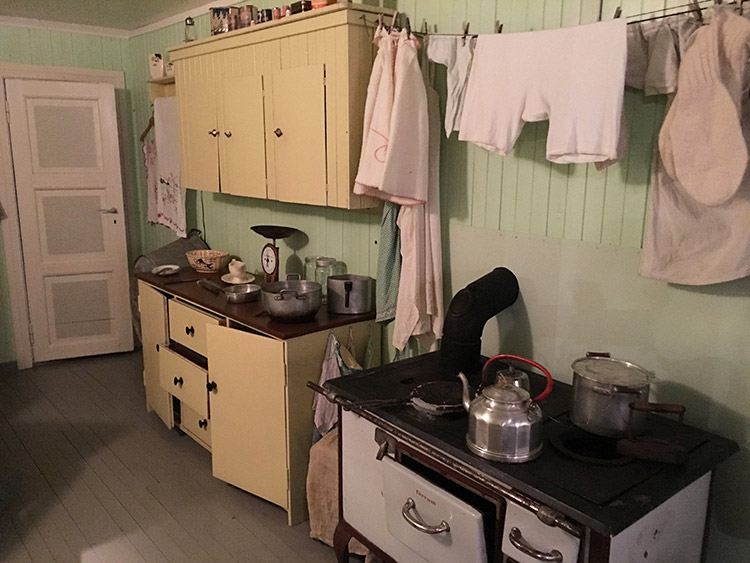
Many people buried their valuable or sentimental items in the ground before fleeing, and some of those items are today on display in the museum.
One object prominently displayed in the reception area is the piano of the Feddersen family. Left behind in the family home during the evacuation, the piano was assumed destroyed, but in fact the German army had commandeered it. It was rediscovered years later with a German reference number and returned to the family, who gifted it to the museum.
The exhibition also covers the post-war years, the reconstruction of the town using simple single-dwelling properties, and a gradual increase in the standards of furnishing and living. A walk up to the top of the museum’s tower (an elevator is available) is essential to see some of the examples of the reconstruction that still stand today.
A small gift shop styled as a 1950s convenience store and a café serving waffles and hot drinks are sited in the foyer.
Hammerfest church
The triangular design of Hammerfest Church is reminiscent of the Arctic Cathedral in Tromsø. That being said, this landmark building is actually inspired by the fish-drying racks found throughout the north of Norway. Built in 1961, the stone and concrete parish church seats more than 500 people.
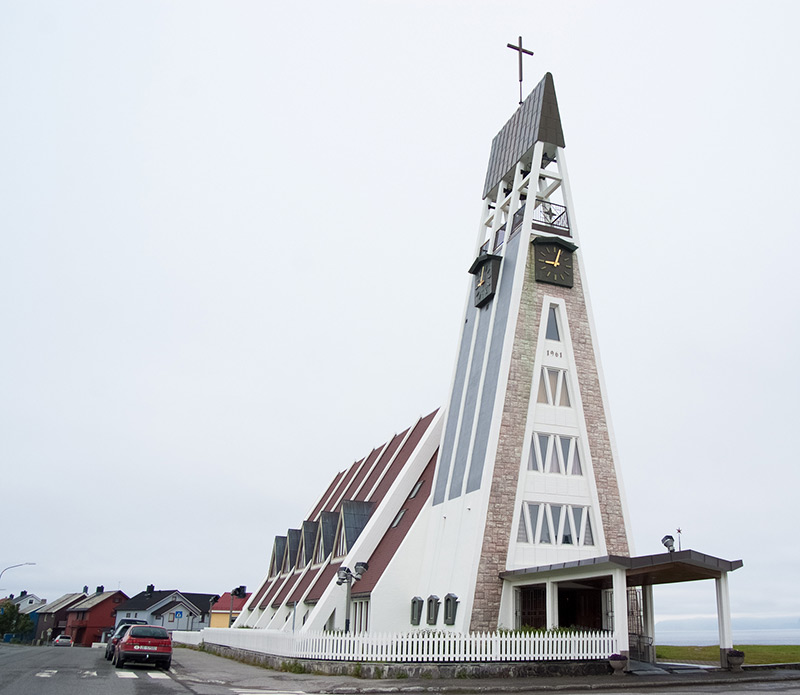
The eastern wall features a beautiful 15-piece stained-glass window and, combined with the brightly colored pews, helps to create a surprisingly warm interior, in contrast to the cold concrete of the building itself. The wood carvings on the organ gallery detail the town’s previous churches, which have been destroyed over the years.
Struve Geodetic Arc
Hammerfest marks the northernmost point of the Struve Geodetic Arc, a chain of 19th-century survey triangulations stretching down to the Black Sea that yielded the first accurate measurement of a meridian. Modern digital techniques have shown the original measurement to be just a few hundred feet out.
The chain is today a UNESCO World Heritage listed site, so the northernmost point is marked by the Meridian Monument, which is little more than an obelisk and information plaque.
Located in an industrial park, the monument isn't the most thrilling place to visit, but on a sunny day the 30-minute stroll around the bay to get there is pleasant enough.
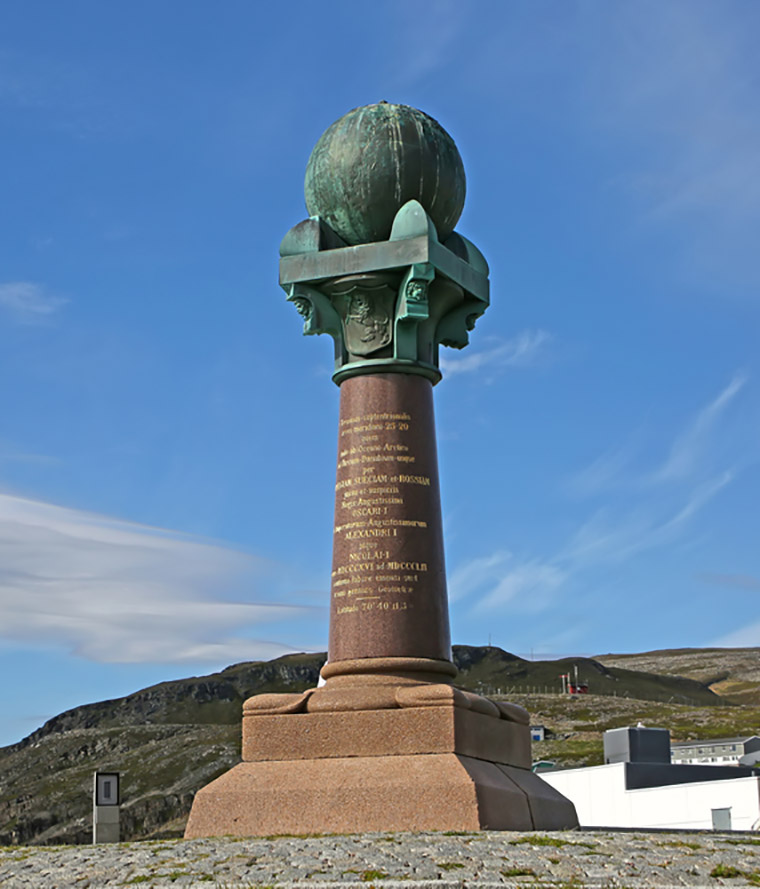
Hiking in and around Hammerfest
The hills around Hammerfest are ideal for hikers of all ages and ability. Start out with Gammelveien, literally the Old Road, a gravel path that circles the town and surrounding hills and lakes. The path is well-maintained, and is signed with information boards and maps at regular intervals.
The path incorporates SikkSakk-veien, a pathway that zigzags its way up the sheer cliff that towers over downtown. Despite the height of the cliff, the path is a gentler slope than you may expect, and the views from the top are spectacular. This section is, however, closed during the winter.
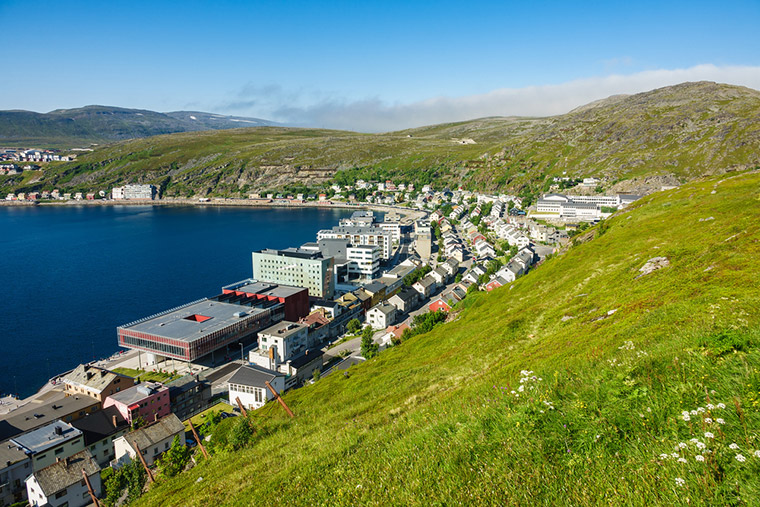
An alternative hiking tour closer to Hammerfest starts just behind the city’s airport in the district known as Prærien. A 2.5-hour round-trip along a marked trail takes you to the summit of Storfjellet, near the transmission tower, from where you can get clear views of the city, Sørøya island, and Melkøya island.
The trail is suited to inexperienced hikers, although if you are starting from central Hammerfest you should allow around four hours for the full round-trip.
A large island to the west of Hammerfest, Sørøya island is a popular hiking destination, especially in the summer when the long sandy beaches are the ideal place to wild camp under the midnight sun. A common starting point is the small village of Akkarfjord, which can be reached via a ferry from Hammerfest.
The ferry runs just twice daily and the timetable varies by season, so check ahead with the tourist information office. You’ll likely be sharing the ride with goods and supplies destined for the 100 people who live permanently on the island.
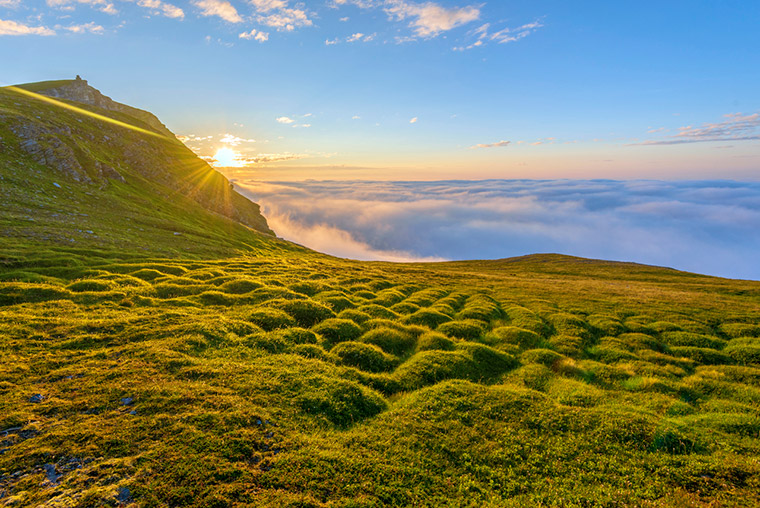
As the boat returns immediately to Hammerfest, it’s also possible to make a round-trip without setting foot on Sørøya.
Where to stay in Hammerfest
The spacious rooms at the waterside Scandic Hammerfest are the best in town, although you'll need to pay extra for a sea view. The hotel’s intimate restaurant has an open kitchen, roaring fireplace, and floor-to-ceiling windows with sea views, but you'll pay for the experience.
If price is your primary concern, the Smarthotel is your best option. There’s very little space for anything beyond a suitcase, but all rooms are clean and minimalist with a work desk, flatscreen TV, and small bathroom with shower.
Hotell Skytterhuset is perched just behind the cliff that overlooks the city. You can take a six- or seven-minute drive from the central area, or scramble up the zigzag path from the city. The 145 basic rooms are dominated by wood and old-fashioned decor, but unfortunately the curtains aren’t thick enough to keep out the summer’s midnight sun, so an eye mask is strongly recommended!
Another budget option above the town is the city’s most popular campsite, Storvannet Camping. The quiet campsite is situated on the banks of the Storvannet lake, just a mile southeast of central Hammerfest.


I once asked at the tourist information about the polar bear statue and it’s also a symbol of the strength that people showed during the years of war and fire.
Greetings from Hammerfest.
The city of Hammerfest is a stopping point for the Hurtigruten and on one visit we were greeted and welcomed by a school orchestra playing some beautiful music. We had enough time to walk to the cathedral and cemetery and both were very interesting and also visited the local museum where I first saw a Puffin in one of the displays. We were sorry that we didn’t have more time to explore the town but the memories linger on.
Visited in 2016 whilst on a motorcycle tour. The ride up from Alta is superb with fantastic scenery. The town is perfect for a stopover or just a pit stop for lunch. The people were very friendly as are most Norwegians. Enjoyed it so much that another visit is planned
İ wish to see very much. İ wroted with büro Tourist information but unfortunately corona wirus become .After that possibly l wish to see very much love from Türkiye.